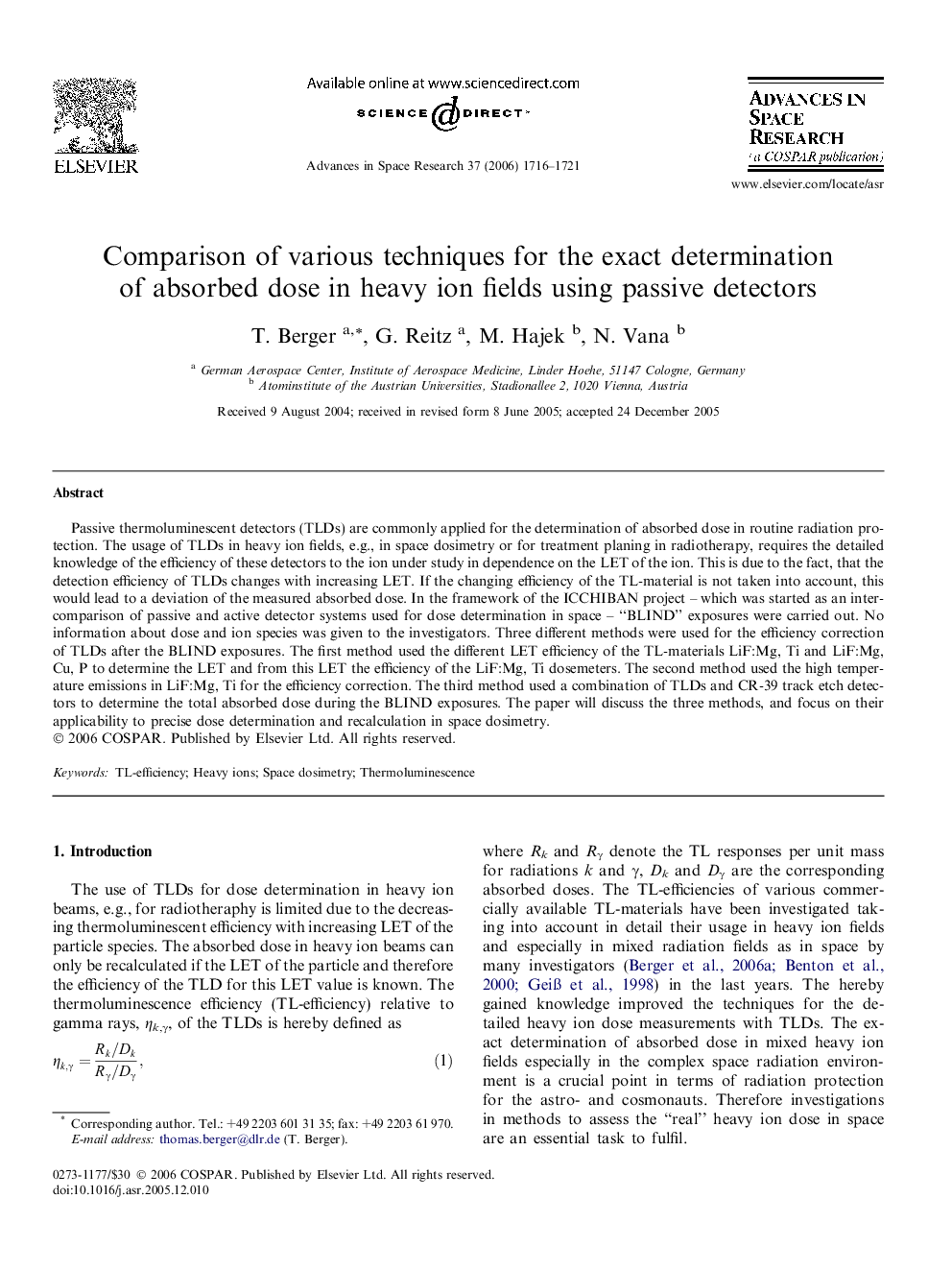| Article ID | Journal | Published Year | Pages | File Type |
|---|---|---|---|---|
| 1768706 | Advances in Space Research | 2006 | 6 Pages |
Abstract
Passive thermoluminescent detectors (TLDs) are commonly applied for the determination of absorbed dose in routine radiation protection. The usage of TLDs in heavy ion fields, e.g., in space dosimetry or for treatment planing in radiotherapy, requires the detailed knowledge of the efficiency of these detectors to the ion under study in dependence on the LET of the ion. This is due to the fact, that the detection efficiency of TLDs changes with increasing LET. If the changing efficiency of the TL-material is not taken into account, this would lead to a deviation of the measured absorbed dose. In the framework of the ICCHIBAN project - which was started as an intercomparison of passive and active detector systems used for dose determination in space - “BLIND” exposures were carried out. No information about dose and ion species was given to the investigators. Three different methods were used for the efficiency correction of TLDs after the BLIND exposures. The first method used the different LET efficiency of the TL-materials LiF:Mg, Ti and LiF:Mg, Cu, P to determine the LET and from this LET the efficiency of the LiF:Mg, Ti dosemeters. The second method used the high temperature emissions in LiF:Mg, Ti for the efficiency correction. The third method used a combination of TLDs and CR-39 track etch detectors to determine the total absorbed dose during the BLIND exposures. The paper will discuss the three methods, and focus on their applicability to precise dose determination and recalculation in space dosimetry.
Related Topics
Physical Sciences and Engineering
Earth and Planetary Sciences
Space and Planetary Science
Authors
T. Berger, G. Reitz, M. Hajek, N. Vana,
